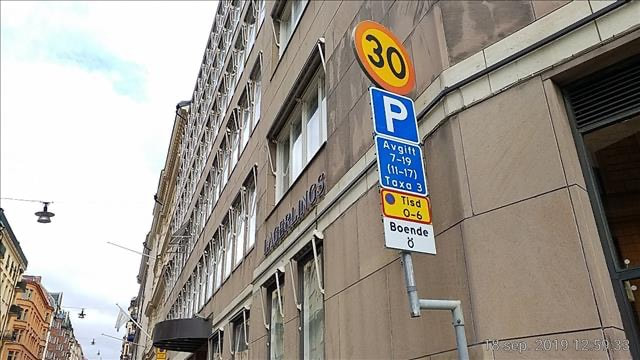Stockholm | Dynamic Servicetimes
Description
The aim of the project is to test dynamic service times (1) in order to investigate the legal, technical, usage behaviour and financial aspects of it. Within the project, the efficiency of dynamic service times is analyzed compared with normal static service times. This will be done through a pilot where a dynamic digital sign is tested in public space in the City of Stockholm. At the same time, tests of behavior and acceptance are carried out for various relevant target groups such as, for example, citizens and companies. Within the case study, regulations and costs in connection with the introduction of dynamic servicetimes must also be analyzed and balanced against the costs of static servicetimes.
The project will try to answer:
• What are the legal possibilities and obstacles compared to current service times?
• How much better use of space in the city can dynamic digital service times enable?
• How can the city organize oneself around dynamic digital service times?
• Are dynamic digital service times financially feasible?
• Finally: Are dynamic digital service times interesting to implement in the city?
In general, dynamic service times can be made so that citizens, companies and visitors can have a greater opportunity to park or use the public space in other ways. This is because dynamic service times could make a more efficient use of public space. The main goal is to improve for the citizens, but the project can also potentially make a better follow-up of the contractors who use the service hours today. The effect on incorrectly parked vehicles can also have a positive effect on the contractors.
Finally, The project also contributes to the transition to a resource-efficient and sustainable transport system in the city and contributes to the global sustainability goal 11. Sustainable cities and communities, and in particular the sub-goals 11.6 and 11. 3.
The project will try to answer:
• What are the legal possibilities and obstacles compared to current service times?
• How much better use of space in the city can dynamic digital service times enable?
• How can the city organize oneself around dynamic digital service times?
• Are dynamic digital service times financially feasible?
• Finally: Are dynamic digital service times interesting to implement in the city?
In general, dynamic service times can be made so that citizens, companies and visitors can have a greater opportunity to park or use the public space in other ways. This is because dynamic service times could make a more efficient use of public space. The main goal is to improve for the citizens, but the project can also potentially make a better follow-up of the contractors who use the service hours today. The effect on incorrectly parked vehicles can also have a positive effect on the contractors.
Finally, The project also contributes to the transition to a resource-efficient and sustainable transport system in the city and contributes to the global sustainability goal 11. Sustainable cities and communities, and in particular the sub-goals 11.6 and 11. 3.
- Servicedays: On service days (also called cleaning day in the vernacular), public work is performed on a street. This includes for example cleaning, snow removal, well-cleaning, leaf collection, etc. To keep the city's streets clean and accessible, the city needs to perform service work regularly and therefore the service time is set. During the service night or service day, parking is prohibited.
Innovation and Relevance
The purpose of the project is to develop a dynamic parking sign to enable a more efficient use of city space. The city streets have static signs that prohibit parking during a period of time during each week, either all year round or during the winter months. During this time maintenance such as street cleaning, windrow removal or regular checks of stormwater wells is performed. Public space in the city is scarse and one of the goals of the ASAP project is to enable a fuller utilization of resources. With the use of dynamic parking signs, that will only prohibit parking when maintenance is actually scheduled, we hope to reduce the amount of time parking is prohibited, thus enabling a greater use of public space.
Relation to other urban Logistics Projects
The testbed gives a view on public space from a more permit and regulatory perspective. It provides insight to how one can use local policy and regulation to enable the usage of public space in a more dynamic and effective way. This in turn can give valuable input to other projects on how the public space is used today and how one can develop different dynamic usage through local regulation.
Plans for Future Development
If the pilot and project are both successful, it can enable a bigger test of dynamic servicetimes. It will also potentially give input and possibilities to other dynamic uses of public space, such as dynamic signs for loading zones or similar if the regulatory framework allow it.
Impressions
Fotocredits: © Stockholm Stad



